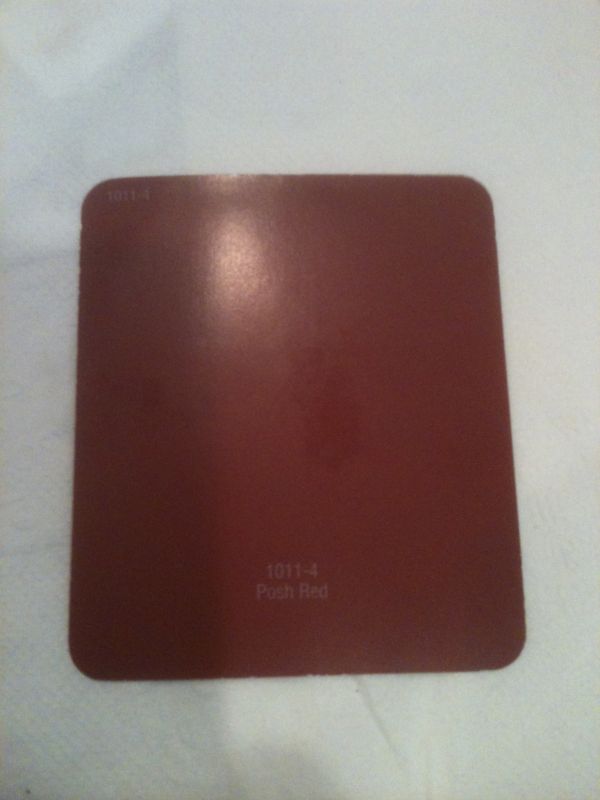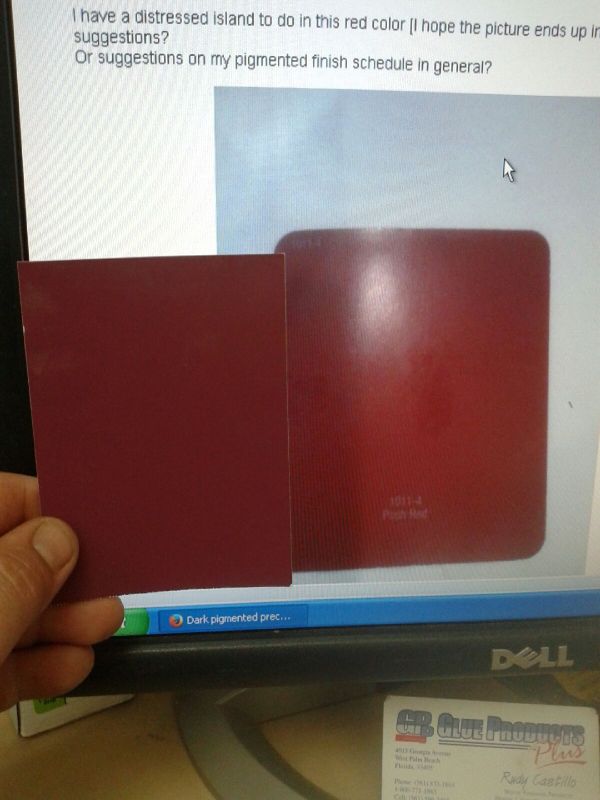Custom-Tinting a Dark Pigmented Precat
A cabinetmaker asks a finishing question: How to create a dark opaque version of a tinted pre-catalyzed conversion varnish. November 29, 2014
Question
First let me say I don't claim to be a finisher, just a cabinetmaker who does some finishing. Most of my pigmented finishes are off-white and I have been following this schedule:
Either tinted lacquer undercoater or tinted vinyl sealer, tinted to my final color.
Scuff sand.
Another coat of sealer or undercoater.
Light scuff.
Two coats of SW precat lacquer.
Now for my problem: I have been asked to do a dark color a couple of times and my local SW store (not a chemical coatings store) says they cannot tint the products I'm using that dark and always suggest using an acrylic enamel, which I've done once and it turned out okay but I really didn't like using it. I'd much rather stick with a solvent type finish that dries fast and to me is easier to do faux finishes with, like distressing, sand-through and glazing. I have a distressed island to do in this red color - any suggestions? Or any suggestions on my pigmented finish schedule in general?

Click here for higher quality, full size image
Forum Responses
(Finishing Forum)
From contributor K:
Get a quart of red oxide, yellow oxide, and lamp black 844 colorants and tint it yourself. Either that or call a supplier in your area that can give you the product you need (a color matched lacquer).
From contributor K:
To add to my previous post, if itís a kitchen island I would definitely be using a conversion varnish. Are there no chemical coatings in your area? You should really find a nearby source for the products you need to do the work you do.
Sherwin Williams is my go-to.
From contributor J:
I have three suppliers in my area that I can buy products from. All of them can get the whites and pastels matched up really well. None of them can get the darker colors to match well. They will all do their best, but they are (Iím going to guess) about 80% match at best. As they explained to me, they can start with white as a base, or clear as a base. They can then only add a certain percentage of colorant. These darker colors really need a gray base to start from and may need more colorant than what is allowable since these colors are developed for latex paints. In essence you can get the colors dark but can you get accuracy in the color mix Ė not in my experience.
From contributor K:
I have never had a problem getting a 100% match.
Sherwin Williams has done good by me. We have very picky clientele and the color has to be dead on for an approval. Again, I would recommend
Sherwin Williams Kemvar Plus conversion varnish tinted to match. They use hyper toners to tint with and do a very good job at matching.
From contributor K:
I could match that color myself no problem. If I was in a pinch and had to use precat I would tint some primer with the 844s I mentioned earlier to get the primer close to the end color. Then I would tint my clear precat to match the color, again using the colors I mentioned earlier.
As a matter of fact, hereís a color I just sprayed out last week that they matched for me. It looks real close to what you need.

Click here for higher quality, full size image
From the original questioner
I'm sure that color would work fine. I don't really have to match anything exactly, that was just a Valspar color chip the lady picked up at Lowes or somewhere. Plus I'll be distressing and glazing so it's going to look different than that anyway. The closest chemical coatings SW store is about 75 miles from me. I just have the standard little paint/wallpaper store nearby. They didn't even keep precat until I started asking for it on a regular basis. I'm sure they could order the CV and maybe tint it for me. I actually have some colorant that the store saved for me when they purged the tint setup. I'm not sure if it's 844s or not. I have about ten different colors. I've experimented with them a little with mixed results. What do you use to precisely measure the colorants? I re-read your post on the tinted CV, I don't know if my store has hyper toners or not but I doubt it.
From contributor K:
I use a digital scale to make formulas. That way you can make a small batch (about 8-16 ounces) and when you get the color, you just do some math to get the amount you need.
From contributor F:
The problem comes when they try to do dark colors in a clear base. Unlike house paints, most lacquers only come in white and clear, there is no dark or mid tone base to use for dark or bright colors like house paint. This results in having to go very high on the pigment load with some colors (black is not bad but bright colors are the worst) to try to get the clear to be fully opaque and cover well with a consistent hue. One of the few exceptions I've found is Valspar's vinyl base coat primers which come in both a white and a neutral base so the tinter can make dark or bright colors without having to exceed pigment load recommendations. You use it as your primer and then because it's a vinyl you can clear coat over it with pretty much whatever you want, Pre-Cat, CV, water-base even.
From contributor K:
All the colors I spray are CV and the Kemvar Plus base comes in white, clear, and black. Also the use of hypertoners as tints makes it possible to achieve darker colors with less pigment. Take a look at the data page for the Kemvar Plus and see what you think. I would probably call the store thatís 75 miles away and have them match the color and ship it (you can just give them the name of the color and the number from the color chip or any color from any fan deck). Either that or I would look for a M.L. Campbell (or similar) dealer nearby that can do custom colors for you.
From contributor M:
Agreed on the Kemvar plus. Itís an excellent product and it can be used self-sealing. It sands just fine, just give it a little longer to cure than you would primer. See what you can do to get your store to carry the Kemvar plus.
From contributor D:
Do you want the finished color to look like the red swatch? By finished I mean the color after the glaze has been applied and removed/ plus clear coats. I'm only mentioning this because the term was used! You might want to take a few color swatches from HD or Lowes and rub some reduced glaze over them just to see what direction they head. It's not going to give you the exact look, but will give you an idea. If the glaze (don't know what you're using) bites into the paper too much-start by applying scotch tape over the swatch first.

